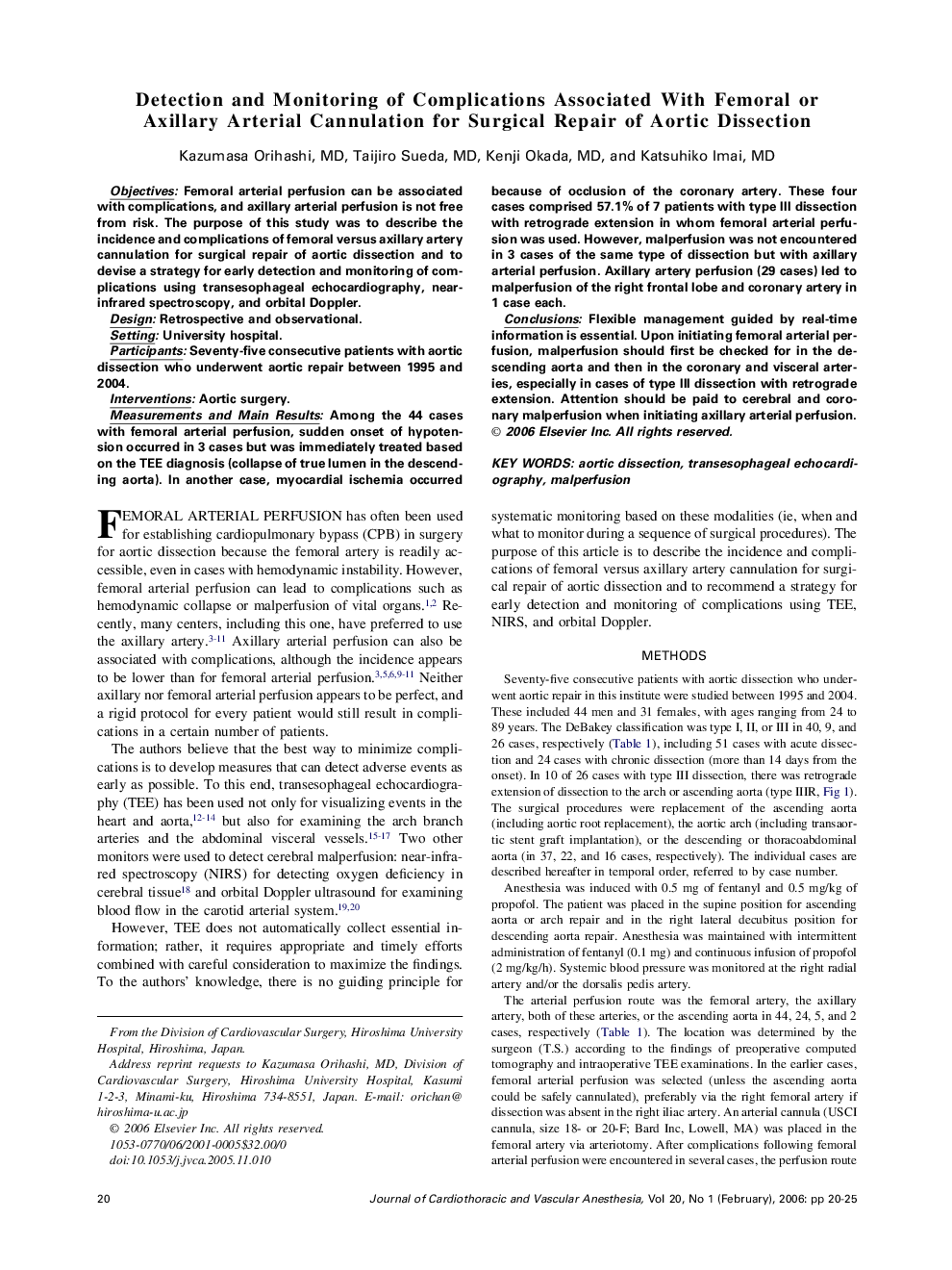| کد مقاله | کد نشریه | سال انتشار | مقاله انگلیسی | نسخه تمام متن |
|---|---|---|---|---|
| 2762036 | 1150227 | 2006 | 6 صفحه PDF | دانلود رایگان |

Objectives: Femoral arterial perfusion can be associated with complications, and axillary arterial perfusion is not free from risk. The purpose of this study was to describe the incidence and complications of femoral versus axillary artery cannulation for surgical repair of aortic dissection and to devise a strategy for early detection and monitoring of complications using transesophageal echocardiography, near-infrared spectroscopy, and orbital Doppler.Design: Retrospective and observational.Setting: University hospital.Participants: Seventy-five consecutive patients with aortic dissection who underwent aortic repair between 1995 and 2004.Interventions: Aortic surgery.Measurements and Main Results: Among the 44 cases with femoral arterial perfusion, sudden onset of hypotension occurred in 3 cases but was immediately treated based on the TEE diagnosis (collapse of true lumen in the descending aorta). In another case, myocardial ischemia occurred because of occlusion of the coronary artery. These four cases comprised 57.1% of 7 patients with type III dissection with retrograde extension in whom femoral arterial perfusion was used. However, malperfusion was not encountered in 3 cases of the same type of dissection but with axillary arterial perfusion. Axillary artery perfusion (29 cases) led to malperfusion of the right frontal lobe and coronary artery in 1 case each.Conclusions: Flexible management guided by real-time information is essential. Upon initiating femoral arterial perfusion, malperfusion should first be checked for in the descending aorta and then in the coronary and visceral arteries, especially in cases of type III dissection with retrograde extension. Attention should be paid to cerebral and coronary malperfusion when initiating axillary arterial perfusion.
Journal: Journal of Cardiothoracic and Vascular Anesthesia - Volume 20, Issue 1, February 2006, Pages 20–25